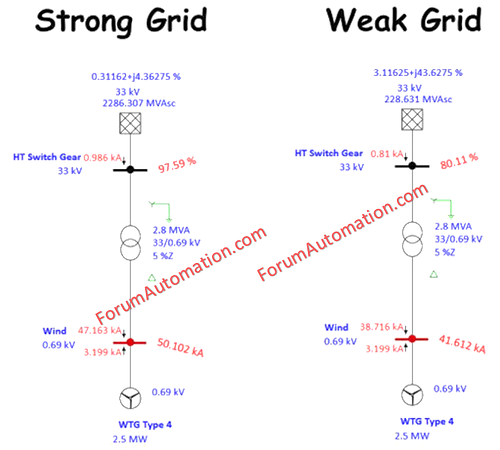Why do inverter-based resources fail to withstand disturbances in weak grids?
Inverter -based solar, wind & battery systems perform substantially differently in a weak grid than in an efficient grid.
A strong grid has low impedance and great short-circuit strength, so voltage & angle remain reasonably steady even when a fault occurs.
This stability provides a stable reference for inverters to maintain synchronism and continue injecting power.
A poor grid is a different issue. Even a brief fault can result in large voltage swings & rapid phase-angle change. With low fault current and strict current limits, inverters may quickly lose their voltage (or) frequency reference causing them to halt or disconnect.
Synchronous machines inherently provide fault current and inertia to help ride through these events, whereas IBRs do not.
The implication is that weak grids require more planning.
Strengthening the network with measures such as synchronous condensers, enhanced fault ride-through settings (or) targeted upgrades is essential for keeping inverter-based resources operational.
You can also follow us on AutomationForum.co, Facebook and Linkedin to receive daily Instrumentation updates.
You can also follow us on ForumElectrical.com , Facebook and Linkedin to receive daily Electrical updates.
